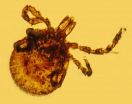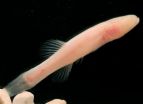(Press-News.org) Washington — Environmental scientists and synthetic biologists have for the first time developed a set of key research areas to study the potential ecological impacts of synthetic biology, a field that could push beyond incremental changes to create organisms that transcend common evolutionary pathways.
The Synthetic Biology Project at the Wilson Center and the Program on Emerging Technologies at the Massachusetts Institute of Technology convened the interdisciplinary group of scientists and are releasing the report, Creating a Research Agenda for the Ecological Implications of Synthetic Biology. The work was funded by a grant from the National Science Foundation (NSF).
"We hope this report raises awareness about the lack of research into these ecological issues," says Dr. James Collins, Ullman Professor of Natural History and the Environment at Arizona State University and former Director of the Population Biology and Physiological Ecology Program and Assistant Director of Biological Sciences at NSF. "We involved experts in the ecological research and synthetic biology communities to help identify priority research areas – and we believe the report can be a roadmap to guide the necessary work. The rapid pace of research and commercialization in the field of synthetic biology makes it important to begin this work now."
The report prioritizes key research areas for government agencies, academia and industry to fund. Research areas include species for comparative research; phenotypic characterization; fitness, genome stability and lateral gene transfer; control of organismal traits; monitoring and surveillance; modeling and standardization of methods and data.
In developing the report, various applications were used to stimulate discussion among synthetic biologists, ecologists, environmental scientists and social scientists, as well as representatives from government, the private sector, academia, environmental organizations and think tanks. Applications considered in the process included bio-mining; nitrogen fixation by engineered crops; gene drive propagation in populations of invasive species; and engineered seeds and plants destined for distribution to the public.
The report says it is necessary to establish and sustain interdisciplinary research groups in order to conduct the research. Long-term support is also needed to address complex questions about how synthetic biology could impact the environment and overcome communication barriers across disciplines, the report says.
INFORMATION:
The report can be downloaded from the Synthetic Biology Project website: http://www.synbioproject.org/library/publications/archive/6685/
About the Synthetic Biology Project
The Synthetic Biology Project is an initiative of the Woodrow Wilson International Center for Scholars supported by a grant from the Alfred P. Sloan Foundation. The Project aims to foster informed public and policy discourse concerning the advancement of synthetic biology. For more information, visit: http://www.synbioproject.org
About the MIT Program on Emerging Technologies
The Center for International Studies (CIS) aims to support and promote international research and education at MIT. The CIS Program on Emerging Technologies (PoET) seeks to improve responses to implications of emerging technologies. PoET was created with support of an NSF IGERT. Research has included retrospective studies on past emerging technologies led by Merritt Roe Smith, Larry McCray and Daniel Hastings, as well as prospective studies on next-generation internet (led by David D. Clark) and synthetic biology (led by Kenneth A. Oye). For more information, visit: http://web.mit.edu/cis/
About The Wilson Center
The Wilson Center provides a strictly nonpartisan space for the worlds of policymaking and scholarship to interact. By conducting relevant and timely research and promoting dialogue from all perspectives, it works to address the critical current and emerging challenges confronting the United States and the world. For more information, visit: http://www.wilsoncenter.org
An ecological risk research agenda for synthetic biology
Report developed by the ecological community highlights priority research areas
2014-05-29
ELSE PRESS RELEASES FROM THIS DATE:
Engineering a better way to rebuild bone inside the body
2014-05-29
Traumatic bone injuries such as blast wounds are often so severe that the body can't effectively repair the damage on its own. To aid the recovery, clinicians inject patients with proteins called growth factors. The treatment is costly, requiring large amounts of expensive growth factors. The growth factors also disperse, creating unwanted bone formation in the area around the injury.
A new technology under development at the Georgia Institute of Technology could one day provide more efficient delivery of the bone regenerating growth factors with greater accuracy and ...
Improved identification of war wound infections promises more successful treatment
2014-05-29
War wounds that heal successfully frequently contain different microbial species from those that heal poorly, according to a paper published ahead of print in the Journal of Clinical Microbiology. These and other findings have important implications for improving wound healing, says first author Nicholas Be of Lawrence Livermore National Laboratory, Livermore, California.
The problem the researchers were addressing is that culture-based identification, which has been used to assay war wound infections, misses the many species that are difficult or impossible to culture. ...
Huge tooth fossil shows marine predator had plenty to chew on
2014-05-29
A fossilised tooth belonging to a fearsome marine predator has been recorded as the largest of its kind found in the UK, following its recent discovery.
A team of palaeontologists have verified the tooth, which was found near Chesil Beach in Dorset, as belonging to a prehistoric relative of modern crocodiles known as Dakosaurus maximus.
The tooth, which has a broken tip, is approximately 5.5 cm long.
Researchers and curators from University of Edinburgh and the Natural History Museum in London identified the item after it was bought at an online auction by a fossil ...
Amber discovery indicates Lyme disease is older than human race
2014-05-29
CORVALLIS, Ore. – Lyme disease is a stealthy, often misdiagnosed disease that was only recognized about 40 years ago, but new discoveries of ticks fossilized in amber show that the bacteria which cause it may have been lurking around for 15 million years – long before any humans walked on Earth.
The findings were made by researchers from Oregon State University, who studied 15-20 million-year-old amber from the Dominican Republic that offer the oldest fossil evidence ever found of Borrelia, a type of spirochete-like bacteria that to this day causes Lyme disease. They ...
Remember parathyroid hormone as well as vitamin D to assess vitamin's role in diabetes
2014-05-29
TORONTO -- Combined assessment of parathyroid hormone along with vitamin D may be needed to assess the impact of vitamin D status on sugar metabolism, according to Toronto researchers. Their study is published on-line in Diabetes on May 29 2014.
The new findings might explain why studies of vitamin D alone have been conflicting and why clinical trials of vitamin D supplementation to improve diabetes have been disappointing, says principal investigator Dr. Ravi Retnakaran. He is a clinician-scientist at the Lunenfeld-Tanenbaum Research Institute at Mount Sinai Hospital ...
Grape-enriched diet supports eye health
2014-05-29
FRESNO, CA – New research presented this week at the Association for Research in Vision and Ophthalmology conference in Orlando, Florida suggests that regular grape consumption may play a role in eye health by protecting the retina from deterioration. Specifically, a grape-enriched diet resulted in a protective effect on retinal structure and function.
The retina is the part of the eye that contains the cells that respond to light, known as photoreceptors. There are two types of photoreceptors: rods and cones. Retinal degenerative diseases affect over 5 million people ...
First-of-its-kind study: Swimmers gain an advantage when they recover with chocolate milk
2014-05-29
Grabbing chocolate milk after a hard swim could give swimmers a performance edge, according to new research presented at one of the nation's top sports medicine conferences – the American College of Sports Medicine's annual conference.1 In a sport where seconds and even tenths of a second can make a big difference and intense practice routines are the norm, Indiana University researchers found that when collegiate, trained swimmers recovered with chocolate milk after an exhaustive swim, they swam faster in time trials later that same day. On average, they shaved off 2.1 ...
The Hoosier Cavefish, a new and endangered species from the caves of southern Indiana
2014-05-29
A new eyeless cavefish is described from Indiana and named after the Indiana Hoosiers. It is the first new cavefish species described from the U.S. in 40 years. Notably, it has an anus right behind its head, and the females brood their young in their gill chamber. The new species was described in the open access journal ZooKeys.
The new species, Amblyopsis hoosieri, is the closest relative of a species (A. spelaea) from the longest cave system in the world, Mammoth Cave in Kentucky. These two species are separated by the Ohio River, which also separates the states of ...
Think fast, robot
2014-05-29
One of the reasons we don't yet have self-driving cars and mini-helicopters delivering online purchases is that autonomous vehicles tend not to perform well under pressure. A system that can flawlessly parallel park at 5 mph may have trouble avoiding obstacles at 35 mph.
Part of the problem is the time it takes to produce and interpret camera data. An autonomous vehicle using a standard camera to monitor its surroundings might take about a fifth of a second to update its location. That's good enough for normal operating conditions but not nearly fast enough to handle ...
Minority entrepreneurs face discrimination when seeking loans
2014-05-29
A disheartening new study from researchers at Utah State University, BYU and Rutgers University reveals that discrimination is still tainting the American Dream for minorities.
The three-part research article, which appears online in the Journal of Consumer Research, finds that minorities seeking small business loans are treated differently than their white counterparts, despite having identical qualifications on paper.
While discrimination in housing, employment and education is well documented, the study shows that minorities also face discrimination in the marketplace. ...
LAST 30 PRESS RELEASES:
Orthopedics can play critical role in identifying intimate partner violence
Worms as particle sweepers
Second spider-parasitic mite described in Brazil
January 2026 issues of APA journals feature new research on autism, pediatric anxiety, psychedelic therapy, suicide prevention and more
Private equity acquired more than 500 autism centers over the past decade, new study shows
New cervical cancer screening guidelines from the US Department of Health and Human Services
Estimated burden of COVID-19 illnesses, medical visits, hospitalizations, and deaths in the US from October 2022 to September 2024
Smartphone use during school hours by US youth
Food insecurity and adverse social conditions tied to increased risk of long COVID in children
Earliest, hottest galaxy cluster gas on record could change our cosmological models
Greenland’s Prudhoe Dome ice cap was completely gone only 7,000 years ago, first GreenDrill study finds
Scientific validity of blue zones longevity research confirmed
Injectable breast ‘implant’ offers alternative to traditional surgeries
Neuroscientists devise formulas to measure multilingualism
New prostate cancer trial seeks to reduce toxicity without sacrificing efficacy
Geometry shapes life
A CRISPR screen reveals many previously unrecognized genes required for brain development and a new neurodevelopmental disorder
Hot flush treatment has anti-breast cancer activity, study finds
Securing AI systems against growing cybersecurity threats
Longest observation of an active solar region
Why nail-biting, procrastination and other self-sabotaging behaviors are rooted in survival instincts
Regional variations in mechanical properties of porcine leptomeninges
Artificial empathy in therapy and healthcare: advancements in interpersonal interaction technologies
Why some brains switch gears more efficiently than others
UVA’s Jundong Li wins ICDM’S 2025 Tao Li Award for data mining, machine learning
UVA’s low-power, high-performance computer power player Mircea Stan earns National Academy of Inventors fellowship
Not playing by the rules: USU researcher explores filamentous algae dynamics in rivers
Do our body clocks influence our risk of dementia?
Anthropologists offer new evidence of bipedalism in long-debated fossil discovery
Safer receipt paper from wood
[Press-News.org] An ecological risk research agenda for synthetic biologyReport developed by the ecological community highlights priority research areas



